Art Nouveau
Art Nouveau defines a style, especially in the decorative arts, that was flourishing during the years 1890 to the beginning of World War I. Art Nouveau (French for "new art") started in Paris and soon swept across Europe and America. It was applied mainly in the decorative arts, including a range of visual arts such as posters (Alfons Maria Mucha), furniture, jewelry, and architecture (Gaudí in Barcelona).
Reacting against mass production techniques, Art Nouveau artists reverted to manual methods of production, putting a strong emphasis on aesthetics and ornamentation. Flowing lines and curves, and asymmetrical shapes, were characteristic of the style. Art Nouveau artists and designers adopted motifs from the natural world – intertwining branches, butterflies, dragonflies, and above all female figures, female faces, and flowing luxurious hair. The style was strongly influenced by Japanese art.
In Art Nouveau jewelry, female faces were decorated with gemstones, mainly curved stones such as opals and moonstones. Beautiful and aesthetic, the jewelry of the time included necklaces, pendants, bracelets, rings, and brooches.
-
English Ring with Magical Opal Surrounded by Zircons
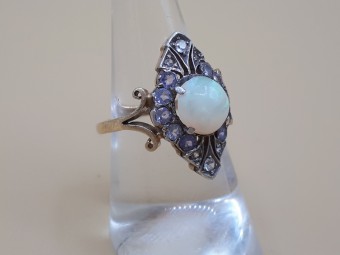
-
Unique Gold Ring with Aquamarine and Diamonds
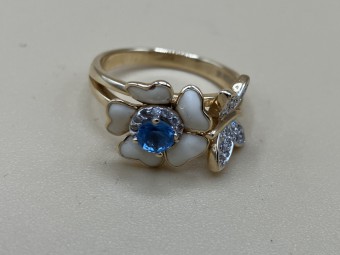
-
Diamonds and Sapphires 18 Carat Antique PendantSold

-
Art Nouveau White Gold Pendant with Rose Cut Diamonds
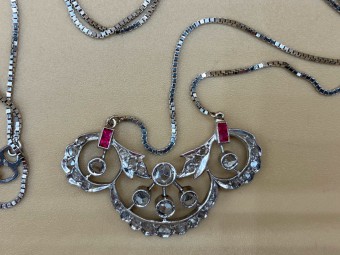
-
Onyx Earrings Decorated with Gold Flowers and PearlsSold
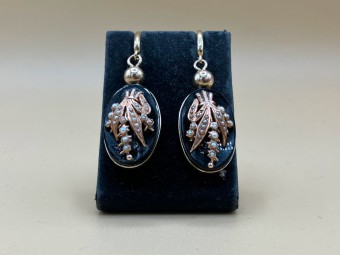
-
Turquoise Enamel and Silver Pocket WatchSold
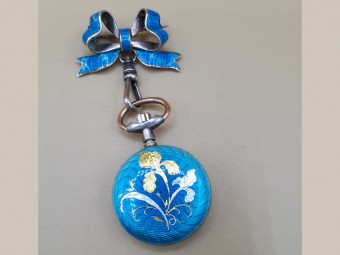
-
Gold Filigree EarringsSold

-
Unique Green Ceramic Vase

-
Antique Gold Pendant with Engraved Coral Flower

-
Large Gold and Pearls Pendant (or Pin)

-
Large Rose Cut Diamonds Pendant with Gold NecklaceSold
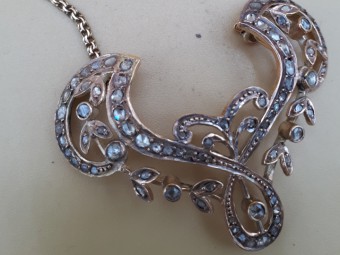
-
French Brass and Glass Jewelry BoxSold

-
Classic Art Nouveau Jewelry BoxSold
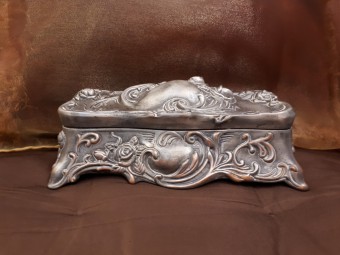
-
Gold Coral Grape Clusters EarringsSold
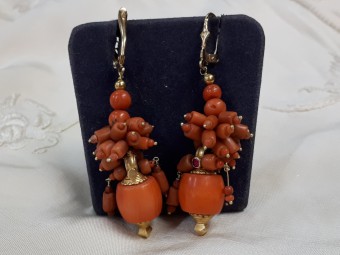
-
Japanese Art Nouveau Brass VaseSold

-
Antique Onyx Earrings with Rose Cut DiamondsSold

-
Antique Beautiful Pewter Vase with Art Nouveau ReliefSold

-
Gold and Copper Japanese Amita EarringsSold

-
Bow Shaped Gold Pendant with DiamondsSold

-
Hoop Bracelet Engraved Bone with Elephants

-
Pearls and Peridots Necklace with Enamel BeetleSold

-
Bohemian Garnet NecklaceSold

-
Gold Earrings with Jades and DiamondsSold

-
Beautiful Art Nouveau Silver PendantSold

-
Gold Earrings with Coral and and Art Nouveau FiligreeSold

-
Gold Necklace with Corals, Turqouises and Antique PearlsSold

-
Onyx Necklace with a Beautiful High Quality CameoSold

-
Large Gold Brooch with Malachite and Corals
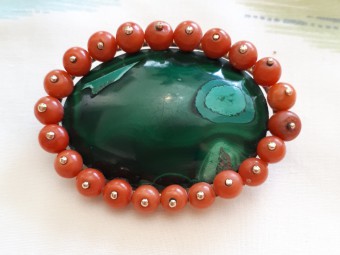
-
French Art Nouveau Ring with Shiny DiamondsSold

-
Gold Pendant with Hand and Cameo Red CoralsSold
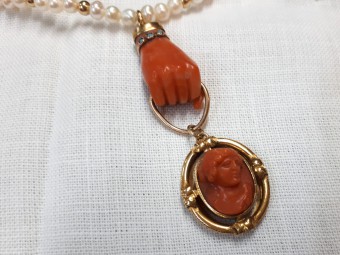
-
22 Karat Earrings Designed as Fish with FlowersSold

-
French Gold Leaf Shaped Earrings with DiamondsSold

-
Gilded Long Silver Earrings with Blue Enamel and Green JadesSold

-
Long Gold Earrings with Large Red CoralSold

-
14 Carat Gold Rare Art-Nouveau EarringsSold

-
Gold Unique Art Nouveau PendantSold

-
Art Nouveau Gold Pendant with Rose Shaped CoralSold

-
Art Nouveau Filigree Bracelet with EnamelSold

-
Silver Hoop Bracelet with Large Carenlian and EnamelSold

-
Large Gold Pendant with Rose Cut Diamonds FloraSold
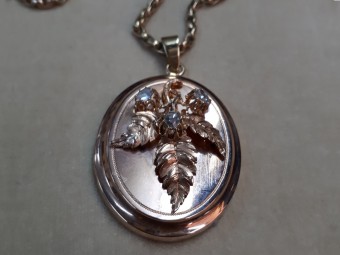
-
Gold French Pendant with Dancer Cameo
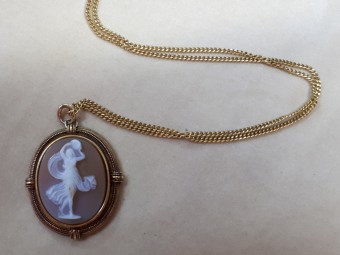
-
Large Art Nouveau Pendant with Diamonds and Natural PearlsSold

-
Silver and Gold Egg Shaped Earring with EnamelSold

-
Art Nouveau Pendant with Rose Cut Diamonds "Flowers"Sold

-
Garnets Bracelet with Unique LatchSold

-
Gold Ring for Man or Woman with Dragon in EnamelSold
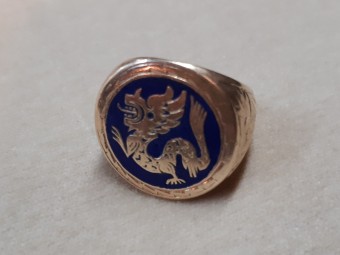
-
Japanese Porcelain Centerpiece with Enamel Decorations of Butterflies and FloraSold

-
Bronze Angel Shaped Letter Scale - RareSold
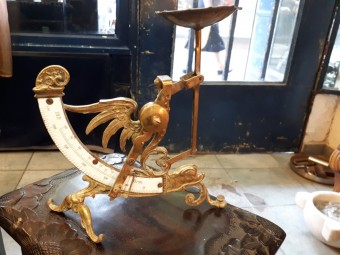
-
Dutch Gouda Pottery Ceramic VaseSold
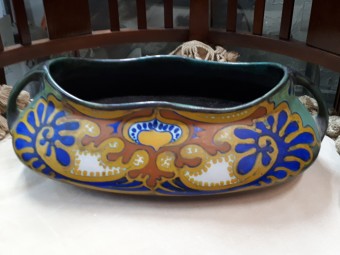
-
French Art Nouveau Plique-à-jour PendantSold

-
Antique Gilded Silver Brooch with Diamonds and Pearls

-
Gold Art Nouveau Bracelet with 11 Medallions of Women PortraitsSold

-
Large Lapis Pendant with Carving on Both SidesSold

-
Rose Cut Diamonds and Sapphire Pendant with Pearls NecklaceSold
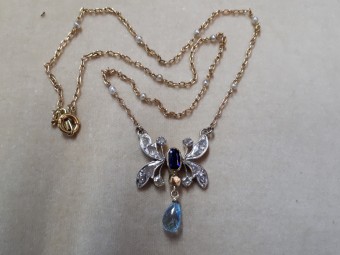
-
Silver Art Nouveau Napkin HolderSold

-
Large Japanese Cedar FlowerpotSold

-
Floral Shaped Art Nouveau Gold NecklaceSold
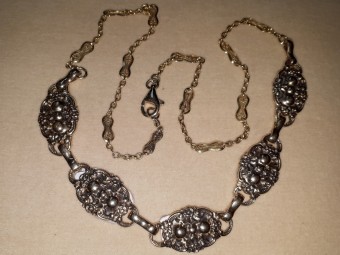
-
Art Nouveau Tables Nest (Set of Four)Sold

-
Beautiful Art-Nouveau WMF Wall PlaqueSold

-
Victorian Locket Pendant with Enamel and Rose Cut DiamondsSold
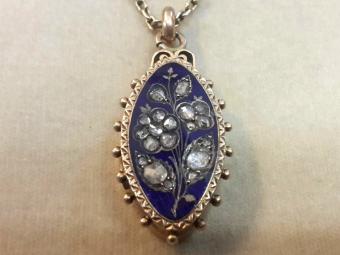
-
Art Nouveau Styled Book StandSold

-
Beautiful Art-Nouveau Coral BroochSold

-
Six French Coffee SpoonsSold
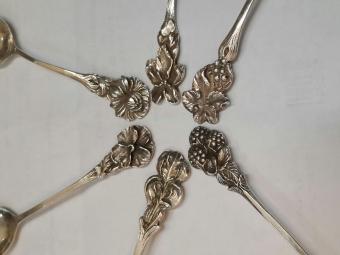
-
Coral Cameo EarringsSold
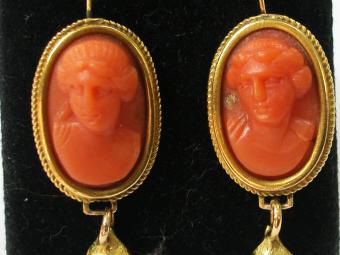
-
Gold Ethnic Gypsy EarringsSold

-
Gold Filigree Necklace with Butterfly PendantSold

-
Gold Pocket Watch with Slide PendantSold

-
Antique Bukharian Earrings with Red Stones and PearlsSold

-
Two Layer Art Glass VaseSold

-
Carved Wood Shelf Depicting Bird and Chicks

-
Russian Necklace with Diamonds and RubiesSold

-
French Pendant with LizardSold

-
Art Nouveau Bronze PlaqueSold
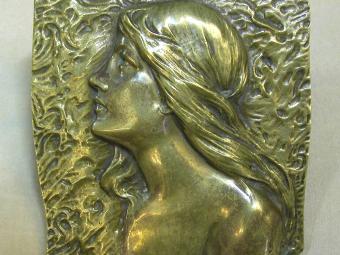
-
Legras French Green VaseSold

-
Owl Shaped Bronze and Glass Table LampSold

-
Russian Monogram Ring with DiamondsSold

-
Art Nouveau Bronze SealSold
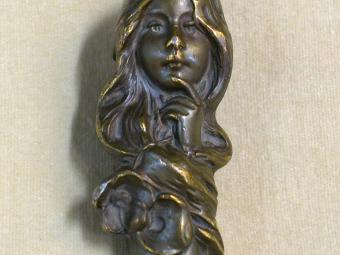
-
Coral Cameo RingSold

-
Gold Necklace with Flowers shaped PendantSold

-
Bangle with Opal and DiamondsSold

-
Bracelet with Malachite Clovers and TulipsSold

-
Cameos BraceletSold

-
Cameos BraceletSold

-
Heart Shaped Turquoise EarringsSold

-
Signet RingSold

-
Garnet EarringsSold

-
Art Nouveau Yellow Bronze BookendsSold

-
Woman Shaped Bronze Letter OpenerSold

-
Ceramic Vase with Birds on BasketSold
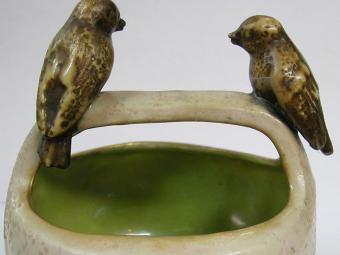
-
Gold Seal Shaped Pendant with MalachiteSold

-
Pearls Bracelet with Rubies and EmeraldsSold

-
Enameled Art Nouveau Pendant with DiamondsSold

-
"Arts and Crafts" Necklace with Large CitrineSold

-
Bracelet with Flower Shaped LinksSold

-
Unique Coral EarringsSold

-
Antique Silver BasketSold

-
Wooden Picture of Girl looking at Mirror

-
Wooden Framed Art Nouveau Mirror

-
Cup and Plate with Unique Painting - Gladstone, EnglandSold

-
Wooden LampsSold

-
Bronze Art Nouveau InkwellSold
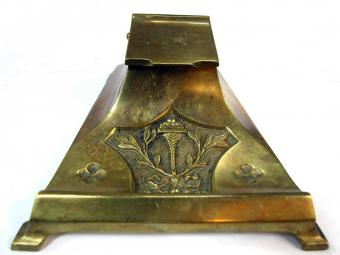
-
Moonstone Earrings with RubiesSold

-
Peking Glass Twin VasesSold

-
Italian Ceramics Sculpture of Couple Kissing with Folklore Costumes

-
Enameled Art Nouveau Pendant of Girl with DiamondsSold

-
Capo di Monte Porcelain Figurines of BeggarsSold

-
Tereszczuk Bronze Sculpture - Rural Girl with Book and PitcherSold
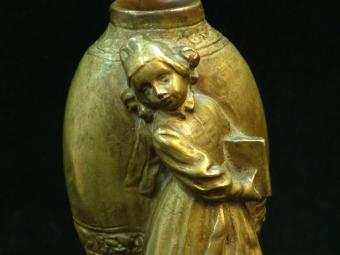
-
Tereszczuk Bronze Sculpture - Young Rural Girl Leaning on PitcherSold
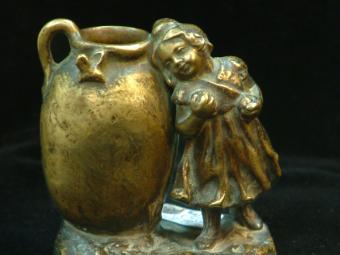
-
German Art Nouveau Tin Table Lamp - "Kaiser"Sold
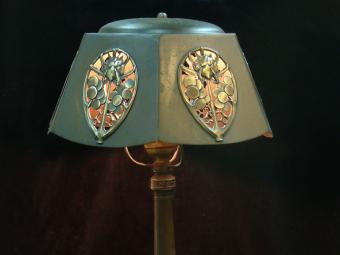
-
Antique Japanese Pair of Vases - "Matsumura"Sold

-
Art Nouveau Gold Concave Watch with DiamondsSold

-
Art Nouveau Pocket Watch with EnamelSold

-
French Art Nouveau Gold Watch with Rose-Cut DiamondsSold
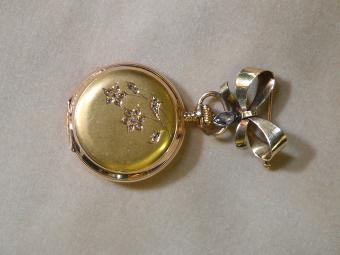
-
Wheat Shaped Art Nouveau Brooch with Coral BeetleSold
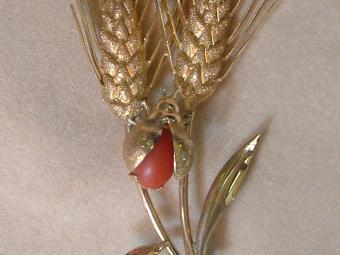
-
Scorpion Shaped Russian Brooch with Enamel and DiamondsSold

-
Gold and Silver Art Nouveau Necklace with Rose-Cut Diamonds and PearlsSold
